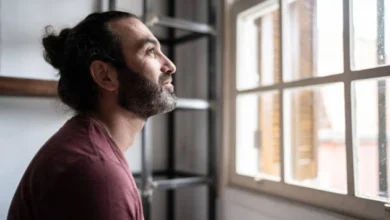Mysteries of mitochondria: why humans need a second genome

Of interest to geneticists, doctors, forensic scientists, and archaeologists, mitochondria contain information about the evolution of the biosphere, human history, and as yet incurable genetic diseases. What riddles could be solved with their help?
The genetic code gives surprises
It was believed that mankind had only one genome in the cell nucleus for a long time. It was its structure that Francis Crick and James Watson deciphered in 1953. A few years later, they discovered something like DNA in the mitochondria, tiny organelles inside cells. It turned out that they contained another, completely independent genome, only much smaller in size.
Information in mitochondrial DNA (called mtDNA) of some living organisms is encoded differently than in the nuclear molecule, not by a universal code. The differences are small but fundamental.
Mitochondria supply energy to the cell. Its inner membrane produces ATP molecules, the universal fuel of the body. So, the mitochondrial genome encodes information about the synthesis of proteins-enzymes, without which fuel production is impossible.
Humans have one of the smallest mitochondrial genomes, with only 16,500 nucleotide pairs, and 37 genes. By comparison, land plants have hundreds of thousands of pairs.
A few molecules of DNA fit into the mitochondria. They are coiled up in a ball together with proteins. In turn, body cells contain many mitochondria, depending on their specialization.
One of the most surprising discoveries is that germ cells have an unequal number of mitochondria. Human sperm cells do not have them. This leads to the fact that mtDNA is only inherited from mother to daughter. In addition, it cannot recombine like nuclear DNA, that is, make different variations from the two parental chromosomes. Clones of mtDNA are inherited.
So how come we have two different genomes in a cell? Back at the end of the 19th century, it was hypothesized that mitochondria were symbiotic bacteria living inside the cell. They were the first to use oxygen to breathe at the dawn of the evolution of the living world.
Perhaps it was safer for them to live inside a large cell incapable of photosynthesis. This is how the symbiosis of the two cell types emerged, leading to the emergence of multicellular organisms. Nowadays, this hypothesis has become mainstream.
Scientists decode mtDNA
The fact that humans have a second genome remained in the shadows for a long time until new methods of DNA sequencing and big data processing were developed at the end of the 20th century.
In 1987, American scientists compared the mitochondrial DNA of 147 different peoples from five regions of the Earth. It turned out that they all descended from a common maternal ancestor, Mitochondrial Eve, who lived in Africa two hundred thousand years ago.
The fact is that if a certain population of people is divided and each group begins to lead a relatively isolated way of life, they eventually accumulate different sets of mutations, the number of which can determine the time of the divergence of the groups.
Mitochondrial DNA has proven to be very convenient for studying human fossils. There is only one DNA molecule in the nucleus of a cell, whereas tens of thousands of mitochondria are in a single cell. In addition, the mtDNA molecule is coiled into a ring. Therefore, it is more resistant to external influences and withstands even slight heating, which is important, for example, when identifying burnt remains.
It is not without reason that the mitochondrial genome of Neanderthals was first deciphered. This work was completed in 2009 by the Swedish scientist Svante Paabo.
Now, for relatively little money, commercial companies can order an mtDNA test and find out the region from which maternal ancestors originated.




